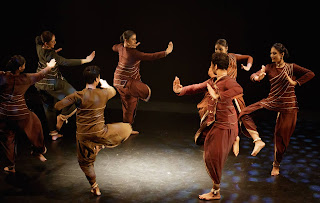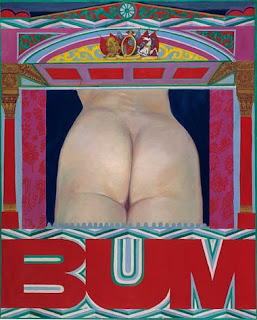It
was a thrilling and a fabulous experience to see a dark subject such as the
harrowing experience of a refugee crisis be given a beautiful artistic
presentation, and that too in Bharathanatyam format. Bharathanatyam has increasingly become a format that is saturated with repertoire with allusions to
divinity, mythology, legends, etc that are so very removed from the
contemporary and require a time machine to take us back in time to the courtly
or a temple ambience of the middle ages.
It was a refreshing and a much needed welcome relie that Apsaras
arts ( SIngapore) has dared to take Bharatham to talk about an issue that keeps nudging at us all at some
corner of our nice and cosy living- the crisis of a refugee that keeps hogging
the front pages of our news paper and is also increasingly becoming a deciding
factor in the politics and policies of many a country around the world.
Close
to home in Chennai, the refugee crisis of Lankan tamils affected by Eelam war,
resulting in the vast eelam Tamil diaspora spread across nations like France and Canada. Their
plight and tribulations looms large in our imagination thanks to the writings
of tamil writers such as Shoba sakthi, Muthulingam, Tamizhnathy (writers from
my recent reads)and movies like
Kannathil Muthamittal ( the haunting song ‘ vidai kodu engal naade’) .
In
looking forward to this dance presentation, there was always a doubt lurking in
mind, as to how was such a sensitive subject to be portrayed in Dance format. In the
end, this evening’s performance proved to be a greatly reassuring testiminy to the
efficacy of the art of Bharatham, its timeless appeal and relevance.
The performance
appeared to be broadly in three different treatments. In the first part there
was a recital of poetry written by children affected by refugee crisis and a
dance item in reflection of this piece of poetry. The lines of poetry were hard
hitting and sharp and portrayed the different hardships faced by a refugee, these were chosen from a book of poetry published UN refugee agency. The
recital was in a mellifluous that closely resemble Lyricist Vairamuthu’s and
was enlivened by abhinayas of Mohanapriyan. The dance items that followed the poetry
pieces were equally dense and poignant, a fabulous case of dance living up to
the terseness of language.
There
was one particular poem that portrayed how the sea, that was a sign of calm and serenity as
long as home was, transformed into a cruel monster that took away homes,
families and peace of mind for a refugee running away from what was home. This
piece of poetry was given a lengthy dance treatment beautifully bringing to
life the gory of the tribulations at sea through some drama created with
intelligent use of light effects.
The
second segment featured the concept ‘ini avan illai’- expounding on the idea of
how the refugee can never be the same person again after all that he has been
through, facing the brutalities of war, losing friends and family , losing home
and rootedness. The lines featured here in this segment were again a sharp
reflection of the agony of a refugee, this was beautifully brought to life by
separate individual performances around the memories of a lost Father, mother, sister,
friend, lover and home- each depicted by a separate dancer, and finally all
performers culminating in a group in a frame.
The
tag line of this segment also featured in the closing of the performance where
the magic of dance was created with simple walking and sharp glancing to music.
The
third segment sounded like adding a popular dance number to an art/ docu cinema
to make appeal to the masses. This was a segment markedly different from the
other two. But no one is complaining as we have our beloved Bharathi’s ‘aasai
mugam maranthu poche’ and Kannadasan’s moon songs, namely ‘nilave ennidam
mayangathe’ and’ anroru naal ithe nilavil’ songs enlivened by brilliant voice
of Chitra Poornima and Karthik Raveendran and some inspired dancing. There was
also the enjoyment of watching popular songs of Kannadasan getting an artistic
dance treatment. It was a refreshingly new experience and one kept looking forward
to more such treatment. The chosen songs fit very well with the refugee
scenario depicted earlier, hence the segment did not look too very odd a fit
with the others.
It
was because the chosen popular songs were so very in sync with the themes of
the earlier segments that, it allowed for the show to end smoothly with the tag
line of the second segment.
It was a brilliant evening getting to
watch a contemporary theme portrayed in Bharatham, some brilliant Choreography,
excellent singing and moving; poignant lyrics that reflect real plight and
finally the pleasure watching an artistic dance treatment to popular numbers. Aravind Kumarasamy and Apsaras arts prove to be an exciting team to look forward to producingsome challenging works. The ideas of their production 'Nirmanyam'- an exploration of dance and Architecture and ' Tanjore' - a retracing of the evolution of dance through a letter written by queen Kamakshi Bai, sound very exciting.














